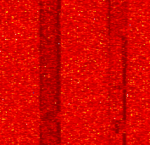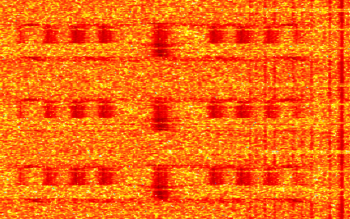Altai Radiotelephone
 | |
|---|---|
| Frequencies | 300 MHz,342 MHz |
| Frequency Range | 300 MHz - 342 MHz |
| Mode | NFM |
| Modulation | FM,FSK |
| ACF | — |
| Emission Designator | — |
| Bandwidth | 10 kHz |
| Location | Worldwide |
| Short Description | The initial generation of cellular mobile radiotelecommunications, similar to trunked radio. -- (Audio Sample is *loud*) -- |
| I/Q Raw Recording | Download file |
| Audio Sample | |
Altai Mobile Radiotelephone was developed in 1968, and was deployed for use in Russia. Legacy systems are still in active use today.
In band signaling is used to connect the mobile unit to the central station in order to place voice calls Voice is transmitted over NFMNarrowband Frequency Modulation analog modulation. The network is connected to the public telephone network via a PBX.
The technology was deployed for governmental use with separate networks isolated from the commercial side.
In the 1970s, the upgrade from VHFVery High Frequency (30-300 MHz) to UHFUltra High Frequency (300-3000 MHz) occurred.
In 1975, telecommunications companies elsewhere in the USSR including Hungary adopted the technology.
Frequencies[edit]
The first iteration used VHFVery High Frequency (30-300 MHz) (150 MHzMegaHertz (MHz) 10^6 Hz) spectrum, and the next generation moved to UHFUltra High Frequency (300-3000 MHz) (300 MHzMegaHertz (MHz) 10^6 Hz) spectrum.
The following specifications were used:
- Base Input: 301.15 - 305.80 MHzMegaHertz (MHz) 10^6 Hz (Mobile Output)
- Base Output: 337.15 - 341.80 MHzMegaHertz (MHz) 10^6 Hz (Mobile Input)
- 50 KHzKiloHertz (kHz) 10^3 Hz Channel Spacing
- 36 MHzMegaHertz (MHz) 10^6 Hz Offset
Additional Images[edit]
Voice channel and Control channel:
